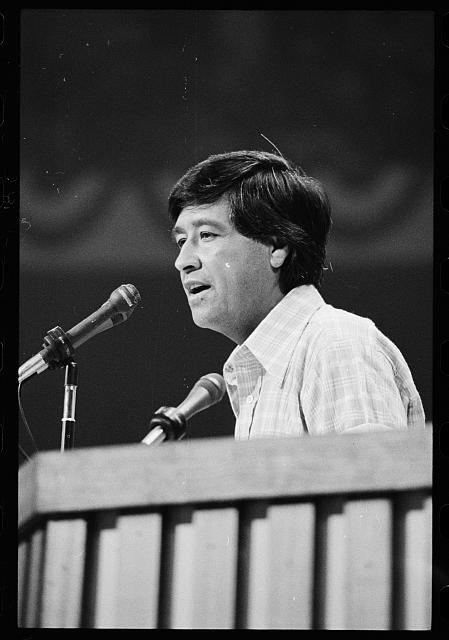Cesar Chavez: The Face of a Movement
Cesar Chavez was born on March 31, 1927 in Yuma, Arizona—an agricultural hub located just ten miles north of the Mexican border. Chavez grew up working in fields across Arizona and California alongside his parents and four siblings. In 1944 at the age of seventeen, Chavez enlisted in the navy and served for two years, but he had a much more personal fight waiting for him at home.
From a young age, Chavez was passionate about combating racial injustices. He frequently stood up for himself and others who experienced these issues. One of his earliest acts of civil disobedience occurred while on a seventy-two hour leave from the navy when he and some friends decided to go see a movie. The movie theatre they visited was racially segregated, but Chavez decided to sit in the “whites only” section of the theatre instead of the “colored” section. He was arrested and released an hour later due to the lack of sufficient charges. It was the first of many times that Chavez challenged authority concerning racial discrimination.
Later in his life, Chavez became more involved with larger political organizations in addition to the grassroots initiatives that he had pioneered. The photo above shows Cesar Chavez at the Democratic Convention in 1976. The UFW had connections with the Democratic Party that dated back to the 1960s and were continually supported by Democratic politicians. In 1968, former New York Senator and member of the Democratic Party, Robert Kennedy, visited Cesar Chavez as he broke his twenty-five day fast. Kennedy gave several speeches throughout the late 60s in support of the UFW and migrant worker’s concerns. In return, Chavez and the UFW supported Kennedy when he ran for President in 1968. Though Kennedy was assassinated before the election, the UFW and Cesar Chavez remained active with the Democratic Party and its leaders.
As an adult, Chavez followed in his parents’ footsteps and worked as a farm laborer with his wife, Helen. The couple worked in fields across California to support themselves and their eight children, but Cesar also began brainstorming ways to effectively organize the farm workers and lobby for change. He joined the Community Service Organization, a union of hispanic migrant workers, in the late 1940s and became the national director of the organization in 1959. Chavez served as president of the CSO for thirteen years before founding the United Farm Workers with his fellow colleagues, Dolores Huerta, and Gilbert Padilla. The jacket above belonged to Cesar Chavez during his time with the United Farm Workers. On the jacket's right hand side, the UFW's symbol of an eagle is embroidered on the chest. A pin with the words "no grapes" adorns the chest of the left hand side, reflecting the UFWs most successful strike from 1965 to 1970. Under the pin is Chavez's first and last names embroidered in white. Chavez's widow, Helen, donated the jacket to the Smithsonian National Museum of American History in 1993 following his death.

